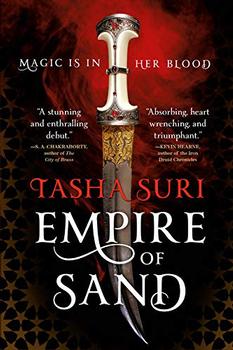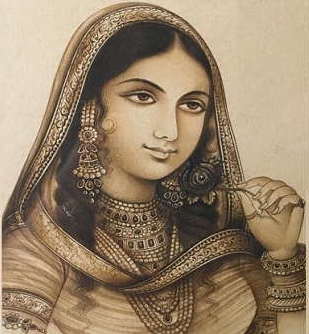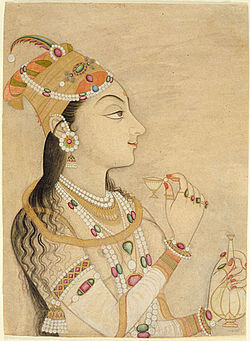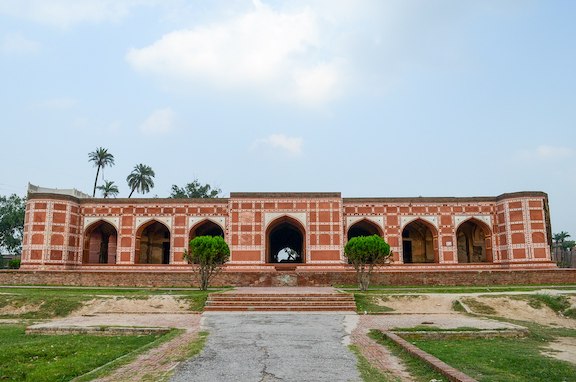Summary | Excerpt | Reviews | Beyond the Book | Read-Alikes | Genres & Themes | Author Bio

Critics' Opinion:
Readers' Opinion:
First Published:
Nov 2018, 496 pages
Paperback:
Nov 2018, 496 pages
 Book Reviewed by:
Book Reviewed by:
Kim Kovacs
Buy This Book
This article relates to Empire of Sand
 Tasha Suri's novel, Empire of Sand, features a heroine named after an influential Mughal woman.
Tasha Suri's novel, Empire of Sand, features a heroine named after an influential Mughal woman.
Mehr-un-Nissa (whose name means "Sun Among Women") was born on May 31, 1577, in the province of Kandahar, Afghanistan, on the western edge of the Mughal Empire. Her parents, Mirza Ghias Beg and Asmat Begum, were both Persian nobility, but for reasons unknown had fallen on hard times and decided to relocate. Mehr was born during the journey, and by some recounts was almost abandoned after her family was robbed of their possessions, and saved only by the intervention of a friendly fellow traveler. Her father had apparently formed some influential contacts along the way and was soon appointed treasurer of the neighboring Afghan province of Kabul.
 Because of her father's important position, Mehr received an excellent education. At the age of 17 she was married to a Turkish soldier named Sher Afgan, the governor of Bihar. They had one child together, Ladli Bagum, born in 1605. (Some sources claim Ladli was Mehr's step-daughter).
Because of her father's important position, Mehr received an excellent education. At the age of 17 she was married to a Turkish soldier named Sher Afgan, the governor of Bihar. They had one child together, Ladli Bagum, born in 1605. (Some sources claim Ladli was Mehr's step-daughter).
A bit of debate circles the next phase of Mehr's life. Some say the Emperor's son Salim (later Emperor Jahangir) fell in love with her while she was still married to Sher Afgan and that Salim arranged Sher Afgan's death, while others say they met years later and Sher Afgan's death was unrelated. Regardless, Sher Afgan died and Mehr was left a widow. After the death of Emperor Akbar and Jahangir's accession to the monarchy, Mehr and Ladli were selected to act as ladies-in-waiting to Ruqaiya Sultan Begum, Jahangir's mother. Mehr was perceived as a favorite and, some say, the Empress loved her the best.
What is known is that Mehr and (now Emperor) Jahangir met during the spring festival of Nowruz in 1611, and that he proposed almost immediately. On May 25, 1611, Mehr became Jahangir's 20th and last wife and was given the name Nur Mahal ("Light of the Palace") - which was changed in 1616 to Nur Jahan ("Light of the World").
Nur Jahan quickly took control of the empire. Jahangir was addicted to opium and alcohol and as a result wasn't really able to rule. While he did have final say on matters, Nur Jahan basically ran things. All decisions and appointments were run by her, and she had possession of the imperial seal (meaning she could issue edicts at any time). Her reign was marked by improvements in the condition of women throughout the empire; she granted land to many and financed dowries for orphan girls. She sponsored trade between her empire and European traders, and owned ships which took pilgrims and goods to Mecca. She also ruled the Emperor's zanana – the women's quarters – which meant control over not only the Emperor's wives, but their under-age children, concubines, slave and guards. She influenced fashion, cosmetics, food and artistic expression; she wrote poetry and encouraged other women to do so.
 Jahangir died in 1627 without naming an heir, and long-simmering feuds between his children boiled over. The final conflict ended up being between Jahangir's third son, Shah Jahan, and his youngest son Shahryar. Nur Jahan backed Shahryar, who was married to her daughter Ladli, but her side lost the battle. Shahryar was executed, and Nur Jahan and Ladli were sent into confinement for the rest of their lives.
Jahangir died in 1627 without naming an heir, and long-simmering feuds between his children boiled over. The final conflict ended up being between Jahangir's third son, Shah Jahan, and his youngest son Shahryar. Nur Jahan backed Shahryar, who was married to her daughter Ladli, but her side lost the battle. Shahryar was executed, and Nur Jahan and Ladli were sent into confinement for the rest of their lives.
Nur Jahan died December 17, 1645, and was buried in a tomb next to Jahangir's – both of which she'd designed, along with the surrounding gardens.
First two pictures: Nur Jahan
Tomb of Nur Jahan
Filed under People, Eras & Events
![]() This article relates to Empire of Sand.
It first ran in the January 9, 2019
issue of BookBrowse Recommends.
This article relates to Empire of Sand.
It first ran in the January 9, 2019
issue of BookBrowse Recommends.





The House on Biscayne Bay
by Chanel Cleeton
As death stalks a gothic mansion in Miami, the lives of two women intertwine as the past and present collide.

The Flower Sisters
by Michelle Collins Anderson
From the new Fannie Flagg of the Ozarks, a richly-woven story of family, forgiveness, and reinvention.

The Funeral Cryer by Wenyan Lu
Debut novelist Wenyan Lu brings us this witty yet profound story about one woman's midlife reawakening in contemporary rural China.
Your guide toexceptional books
BookBrowse seeks out and recommends the best in contemporary fiction and nonfiction—books that not only engage and entertain but also deepen our understanding of ourselves and the world around us.